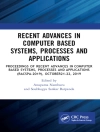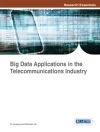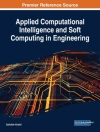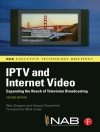With around 3 billion subscribers, GSM is the world’s most commonly
used technology for wireless communication. Providing an overview
of the innovations that have fuelled this phenomena, GSM:
Architecture, Protocols and Services, Third Edition offers a
clear introduction to the field of cellular systems. Special
emphasis is placed on system architecture and protocol aspects, and
topics range from addressing concepts through mobility management
to network management.
This third edition contains around 25% new and reworked material
and has been thoroughly updated to encompass recent advances and
future trends. It serves as both an introductory textbook for
graduate students as well as a reference resource for
telecommunications engineers and researchers.
This edition:
* Presents capacity enhancement methods like sectorization, the
application of adaptive antennas for Spatial Filtering for
Interference Reduction (SFIR) and Space Division Multiple Access
(SDMA)
* Provides a detailed introduction to GPRS, HSCSD, and EDGE for
packet-switched services and higher data rates
* Features updated coverage on the vastly expanded range of GSM
services, including an examination of Multimedia Messaging Service
(MMS)
* Adopts a highly graphical approach with numerous
illustrations
表中的内容
Preface.
1. Introduction.
1.1. The idea of unbounded communication.
1.2. The success of GSM.
1.3. Classification of mobile communication systems
1.4. Some history of statistics of GSM.
1.5. Overview of the book.
2. The mobile radio channel and the cellular
principle.
2.1. Characteristics of the mobile radio channel.
2.2. Separation of directions and duplex transmission.
2.3. Multiple access.
2.4. Cellular principle.
3. System architecture and addressing.
3.1. System architecture.
3.2. The SIM concept.
3.3. Addressing.
3.4. Registers and subscriber data.
3.5. Network interfaces and configurations.
4. Air interface – physical layer.
4.1. Logical channels.
4.2. Physical channels.
4.3. Synchronization.
4.4. Mapping of logical onto physical channels.
4.5. Radio subsystem link control.
4.6. Channel coding, source coding and speech processing.
4.7. Source coding and speech processing.
4.8. Channel coding.
4.9. Power-up scenario.
5. Protocols.
5.1. Protocols architrecutre planes.
5.2. Protocol architecture of the user plane.
5.3. Protocol architecture of the signaling plane.
5.4. Signaling at the air interface (Um).
5.5. Signaling at the A and Abis interfaces.
5.6. Security-related network functions: authentication and
encryption.
5.7. Signaling at the user interface.
6. Roaming an handover.
6.1. Mobile application part interfaces.
6.2. Location registration and location update.
6.3. Connection estalishment and termination.
6.4. Handover.
7. Services.
7.1. Classical GSM services.
7.2. Popular GSM services: SMS and MMS.
7.3. Overviwe of GSM services in Phase 2+.
7.4. Bearer and teleservices of GSM Phase 2+.
7.5. Supplementary services in GSM Phase 2+.
7.6. Service platforms.
7.7. Wireless application protocol.
8. Improved data services in GSM: GPRS, HSCSD and
EDGE.
8.1. GPRS.
8.2. HSCSD.
8.3. EDGE.
9. Beyond GSM and MTS: 4G
Appendices.
A. Data communication and networking.
B. Aspects of network operation.
C. GSM Addresses.
D. List of Acronyms.
References.
Index.
关于作者
Jörg Eberspächer is head of the Institute of Communication Networks at the Technische Universität München (TUM). His current research interests are high-speed and fault-tolerant communication networks: photonic networks, next generation Qo S Internet, mobile networks and multimedia services.
Hans-Jörg Vögel is currently product manager for The Fantastic Corporation, where he is responsible for designing and developing new products, solutions and services in the field of broadband and mobile multimedia.
Christian Bettstetter received a Dipl-Ing degree in electrical engineering and information technology from TUM in 1998 and has since held various research posts. His current areas of interest include ad hoc networking, mobile Internet and mobility management.
Christian Hartmann is also affiliated to the Technische Universität in München. He has extensive experience in the field of telecommunications.












